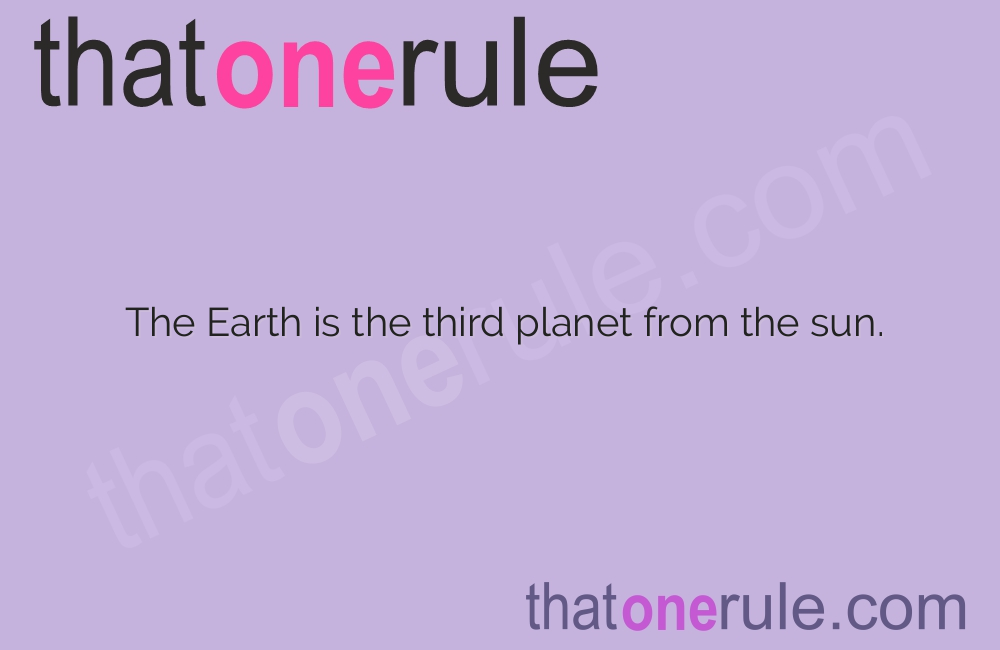Fascinating Facts About Earth for Kids

The Earth is the third planet from the sun.
Earth is the only planet known to have living organisms.
The Earth is about 4.5 billion years old.
Earth is mostly covered by water, with about 71% of its surface being water.
The Earth’s atmosphere is made up of different gases, including oxygen, nitrogen, and carbon dioxide.
The Earth has one moon, which is about 1/4 the size of the planet.
The Earth’s rotation causes day and night.
The Earth takes 365.25 days to orbit around the sun, which results in a leap year every four years.
The Earth’s magnetic field helps protect it from harmful solar radiation.
Many different animals and plants call Earth their home.
The Earth’s highest point is Mount Everest, while the lowest point is the Mariana Trench.
The Earth’s crust is made up of several tectonic plates that constantly move and cause earthquakes and volcanic eruptions.
Earth provides us with resources like water, air, and soil that are necessary for life.
The Earth’s climate is influenced by factors such as latitude, elevation, and proximity to the ocean.
The Earth’s seasons occur because of its tilted axis and its orbit around the sun.
The Earth’s atmosphere is divided into different layers, including the troposphere, stratosphere, mesosphere, thermosphere, and exosphere.
The Earth’s ocean is home to countless marine species and covers about 70% of the planet’s surface.
Fascinating Facts About Earth for Kids part 2
The Earth’s core is composed of iron and nickel and is extremely hot.
The Earth’s surface is made up of different types of landforms, such as mountains, valleys, plains, and deserts.
The Earth’s natural satellite, the moon, affects ocean tides and provides us with a source of light at night.
The Earth’s rotation creates a force called gravity, which keeps everything on the planet’s surface.
The Earth’s biodiversity refers to the variety of living organisms found on the planet.
The Earth’s water cycle involves processes such as evaporation, condensation, and precipitation.
The Earth’s atmosphere protects us from harmful solar radiation and burns up most meteoroids before they reach the surface.
The Earth’s magnetic field helps guide animals like birds and turtles during their migrations.
The Earth is home to different ecosystems such as forests, grasslands, wetlands, and coral reefs.
The Earth’s lithosphere is divided into several tectonic plates that move and interact with each other.
The Earth’s largest ocean is the Pacific Ocean, which covers about 30% of the planet’s surface.
The Earth’s atmosphere contains different layers of gases, including oxygen, nitrogen, carbon dioxide, and trace amounts of other gases.
The Earth’s rotation causes the equator to spin faster than the poles, giving rise to the Coriolis effect.
The Earth’s rotation also affects the direction in which water drains in sinks and toilets through the Coriolis effect.
The Earth’s diverse landscapes provide opportunities for activities like hiking, camping, and exploring nature.
The Earth’s ozone layer helps protect us from harmful ultraviolet (UV) radiation from the sun.
The Earth’s climate has changed throughout its history due to various factors, including natural processes and human activities.
The Earth’s continents were once connected in a supercontinent called Pangaea, which eventually broke apart into the continents we know today.
The Earth’s rainforests are incredibly diverse and provide habitats for numerous plant and animal species.
The Earth’s atmosphere contains layers of gases that trap heat, creating the greenhouse effect that keeps the planet warm.
The Earth’s diverse cultures and languages make it a fascinating place to learn and explore.
The Earth’s fossil record provides evidence of past life forms and helps scientists understand the planet’s history.
The Earth’s mountains are formed through processes like tectonic uplift and volcanic activity.
The Earth’s core generates a magnetic field that serves as a compass for many living organisms.
The Earth’s oceans are vital for regulating temperature, absorbing carbon dioxide, and providing a source of food and resources.
The Earth’s surface is constantly changing due to erosion, weathering, and geological processes.
The Earth’s poles experience periods of continuous daylight during summer and continuous darkness during winter.
The Earth’s diverse wildlife includes animals like elephants, dolphins, butterflies, and tigers, each with unique adaptations for survival.

